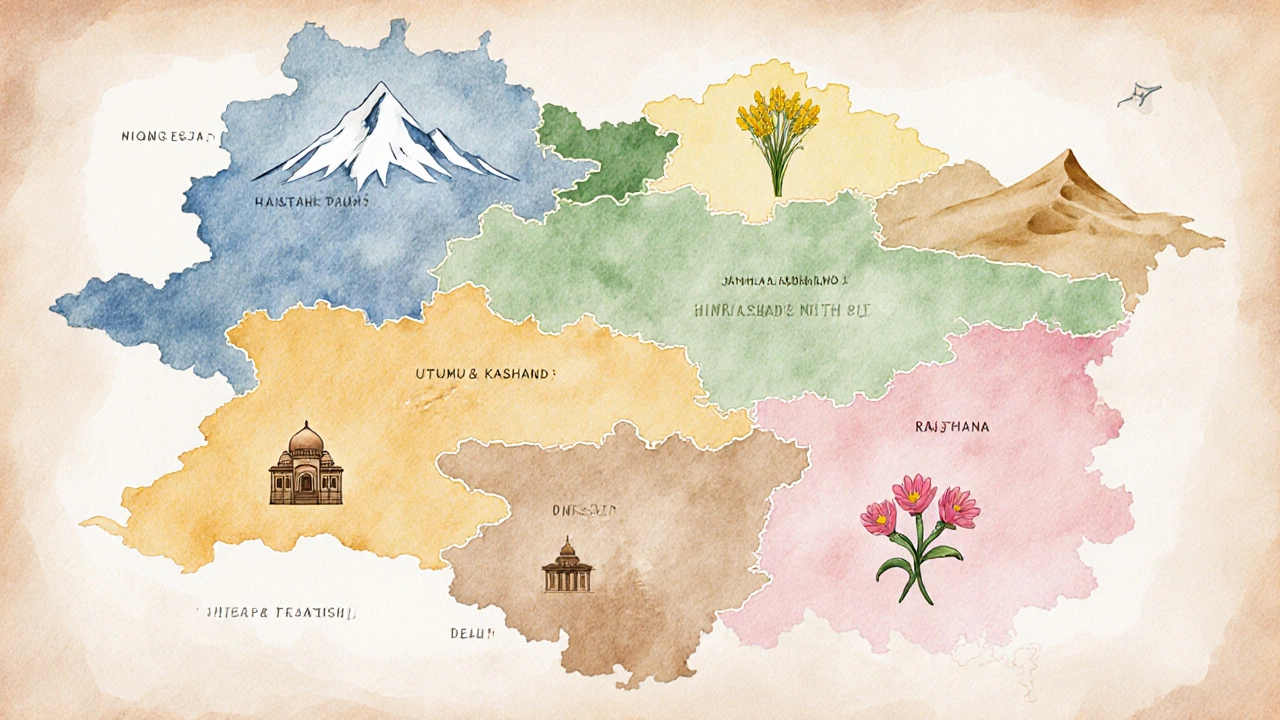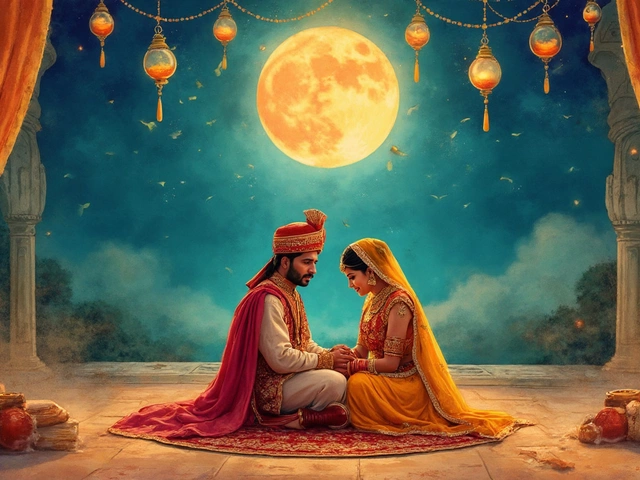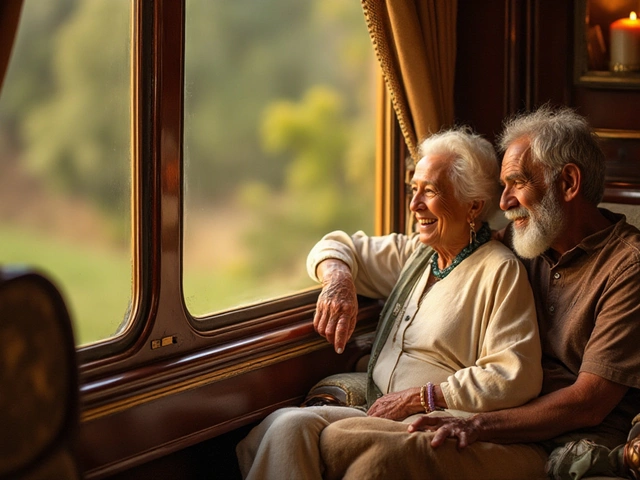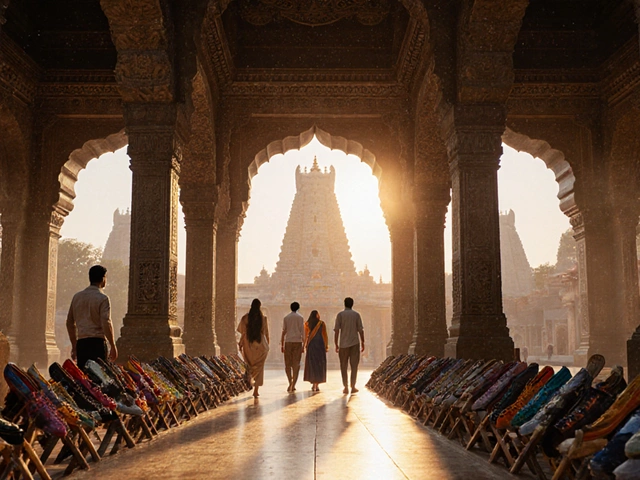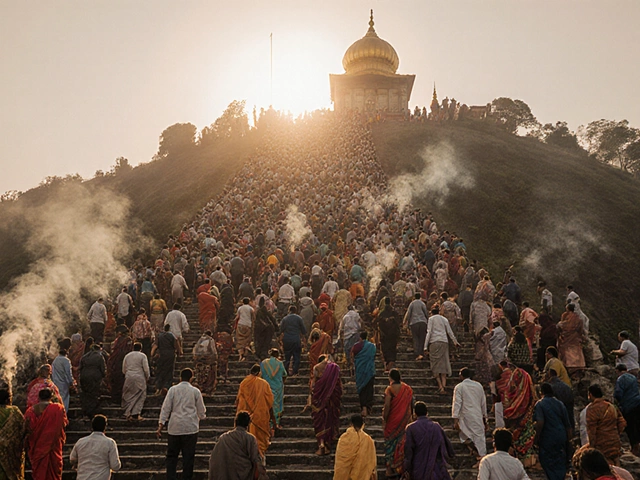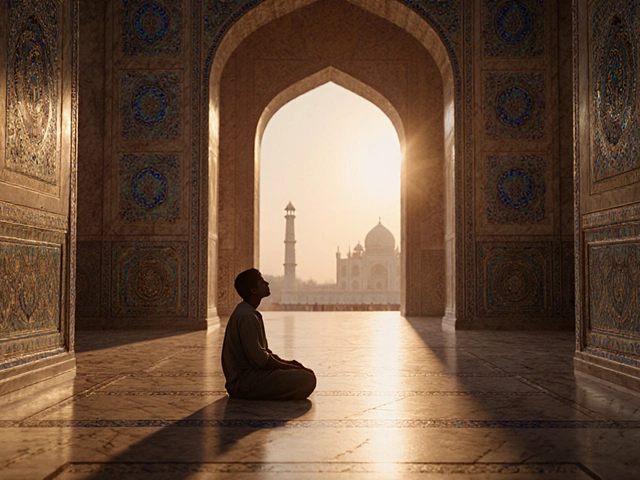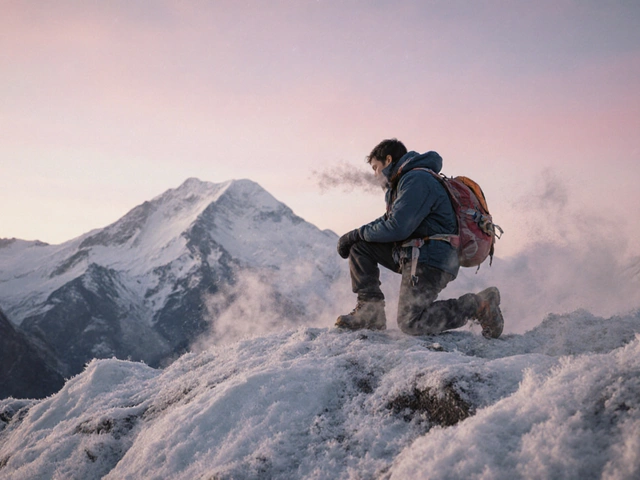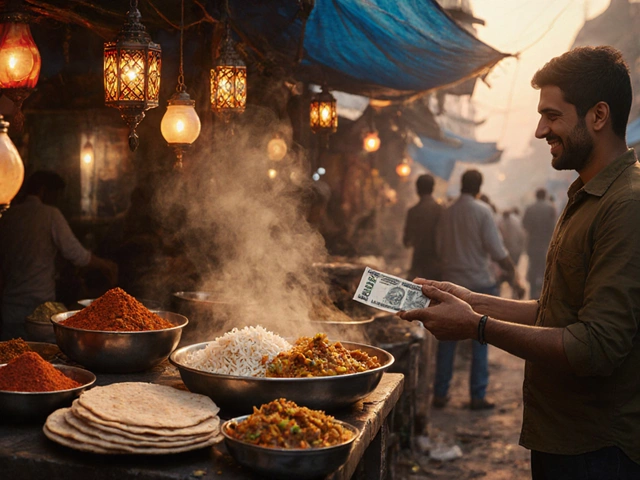North Indian States Beauty Comparison Tool
Himachal Pradesh
Snow-capped Himalayas, pine forests, and crystal-clear rivers.
Beauty Score: 45/50Uttarakhand
Alpine meadows, rivers, and UNESCO World Heritage sites.
Beauty Score: 44/50Jammu & Kashmir
Glacial lakes, high-altitude deserts, and dramatic terrain.
Beauty Score: 43/50Rajasthan
Golden dunes, historic forts, and vibrant culture.
Beauty Score: 42/50Punjab
Mustard fields, rivers, and Sikh heritage sites.
Beauty Score: 38/50Haryana
Mustard blossoms, historic forts, and rural landscapes.
Beauty Score: 36/50Uttar Pradesh
Cultural heritage, river landscapes, and historical monuments.
Beauty Score: 37/50Delhi
Historic monuments, gardens, and urban beauty.
Beauty Score: 35/50Detailed Beauty Breakdown
Click on any state card above to view its detailed beauty breakdown.
Every traveler who dreams of the Himalayas, lush valleys, and vibrant culture ends up asking the same thing: which is the most beautiful state of North India? The answer isn’t a single name you can pin down with a map marker; it’s a blend of landscapes, seasons, and experiences that vary from snow‑capped peaks to desert dunes. This guide breaks down the top contenders, shows how we compare them, and helps you pick the state that matches your idea of beauty.
Key Takeaways
- Himachal Pradesh and Uttarakhand win for alpine scenery and serene valleys.
- Jammu & Kashmir offers dramatic lakes and high‑altitude deserts, but travel can be seasonal.
- Rajasthan dazzles with golden dunes and historic forts, a different kind of beauty.
- Each state shines in a particular season; plan your trip accordingly.
- Practical tips on transport, permits, and peak times make your journey smoother.
How We Judge Beauty
Beauty is subjective, but we anchored our comparison on five concrete factors:
- Landscape diversity - mountains, rivers, forests, deserts, and plains.
- Scenic hotspots - iconic destinations that photographers flock to.
- Seasonal appeal - how many months a year the state looks its best.
- Accessibility - quality of roads, airports, and public transport for tourists.
- Cultural charm - festivals, architecture, and local traditions that enrich the visual experience.
We scored each state on a 1‑10 scale for every factor and added them up for a total beauty score.
Himachal Pradesh - The Alpine Gem
Himachal Pradesh is a hill state known for snow‑capped peaks, pine forests, and crystal‑clear rivers. From the snow‑kissed town of Manali to the serene shores of Spiti Lake, the state delivers endless vistas. Shimla’s colonial charm adds a touch of history, while Dharamshala’s Tibetan culture provides a unique visual palette. Best visited from April to October when mountain roads are clear.
Uttarakhand - The Sacred Valley
Uttarakhand is the gateway to the Garhwal and Kumaon Himalayas, famous for pilgrimage towns and alpine meadows. The Valley of Flowers, a UNESCO World Heritage site, blooms with over 500 alpine species each monsoon, creating a kaleidoscope of colors. Rishikesh offers a river‑front vibe, while Auli’s ski slopes add winter magic. The ideal window is June to September for flora, and December to February for snow.
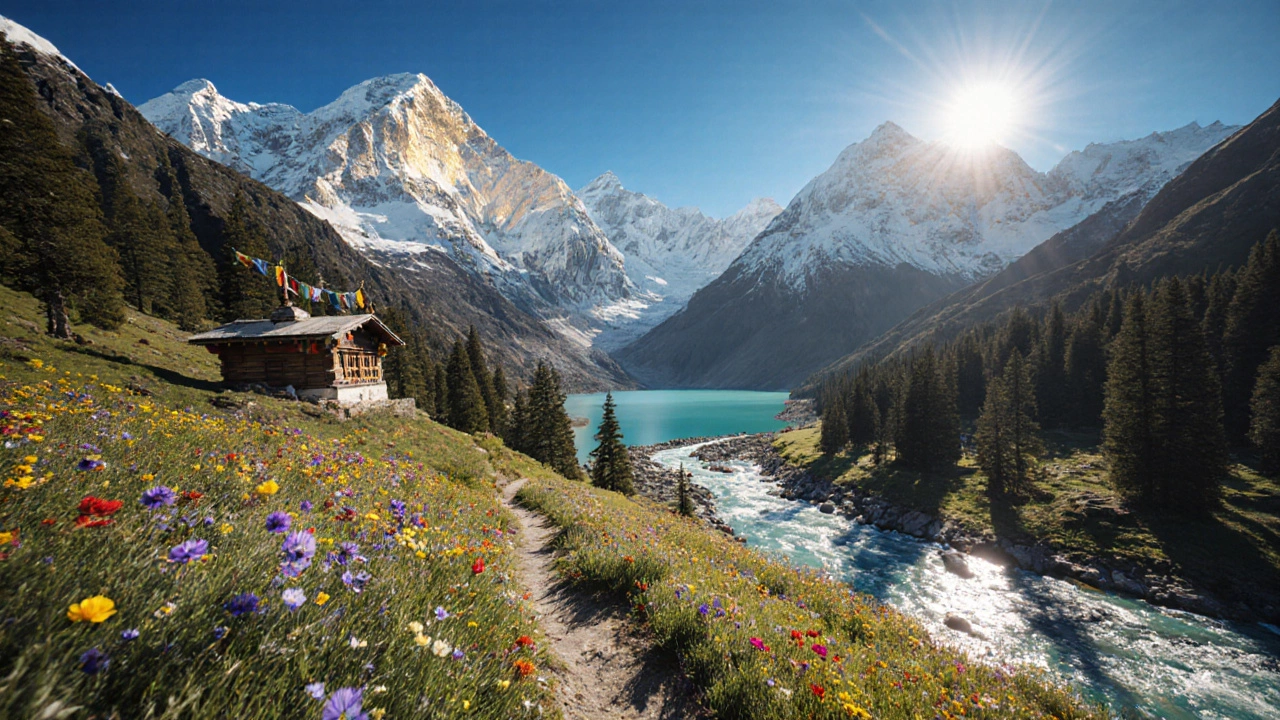
Jammu & Kashmir - The Crown Jewel
Jammu & Kashmir is a region of stark contrasts, featuring the glacial lake DalLake, the high‑altitude desert of Pangong, and verdant valleys. Its dramatic terrain makes it a photographer’s paradise. However, political sensitivities mean travel is best between March and October, when road and air links are reliable. For adventure‑seekers, trekking the Great Lakes trek is a must‑see.
Rajasthan - Desert Splendor
Rajasthan is a desert state showcasing golden dunes, opulent forts, and vibrant festivals. Though not mountainous, its beauty lies in expansive sand seas like the Thar, the pink city of Jaipur, and the turquoise lakes of Udaipur. The best time to visit is October to March, when temperatures are mild and the desert sky glitters at night.
Punjab - The Land of Five Rivers
Punjab is a fertile plain known for its agricultural fields, golden mustard blossoms, and vibrant Sikh heritage sites. The state’s charm is subtler - rolling wheat fields turning amber at harvest, and the sacred Golden Temple in Amritsar. Late February to early April offers the most colorful scenery.
Haryana - The Green Belt
Haryana is a mix of modern cities and rural landscapes dotted with mustard fields and historic forts. While it lacks the dramatic mountains of its neighbors, the state’s countryside bursts into yellow during the mustard season, creating a striking visual contrast against its bustling urban centers.
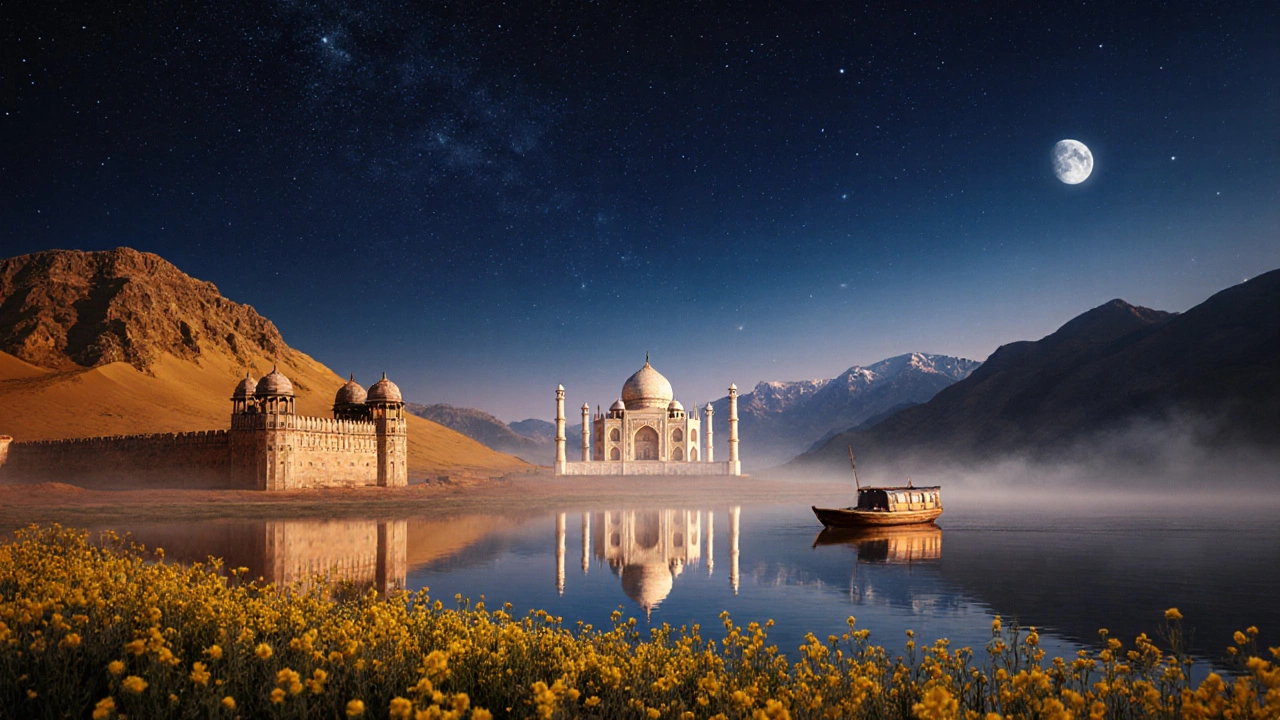
Uttar Pradesh - Cultural Canvas
Uttar Pradesh is India’s most populous state, home to the TajMahal, sacred Ganges banks, and a blend of plains and riverine islands. Its beauty is cultural more than natural, but the sunrise over Varanasi’s ghats and the lush greenery of Dudhwa National Park provide memorable sights. October to March offers clear skies for viewing monuments.
Delhi - The Urban Mosaic
Delhi is the capital city that combines historic monuments with modern skylines. While not a state with natural landscapes, its heritage sites, bustling markets, and tree‑lined avenues give it a unique urban beauty, especially during the winter flower festivals.
Comparison Table
| State | Iconic Landscape | Top Destination | Best Visiting Months | Beauty Score (out of 50) |
|---|---|---|---|---|
| Himachal Pradesh | Snow‑capped Himalayas | Spiti Valley | Apr-Oct | 45 |
| Uttarakhand | Alpine meadows & rivers | Valley of Flowers | Jun-Sep (flowers), Dec-Feb (snow) | 44 |
| Jammu & Kashmir | Glacial lakes & high‑desert | DalLake | Mar-Oct | 43 |
| Rajasthan | Golden dunes & forts | Jaisalmer | Oct-Mar | 42 |
| Punjab | Mustard fields & rivers | Golden Temple | Feb-Apr | 38 |
| Haryana | Mustard blossoms & forts | Kurukshetra Festival | Feb-Apr | 36 |
| Uttar Pradesh | River Ganges & TajMahal | Varanasi Ghats | Oct-Mar | 37 |
| Delhi | Historic monuments & gardens | Humayun’s Tomb | Oct-Mar | 35 |
Practical Tips for Traveling Across North India
- Transport: Major airports in Delhi, Chandigarh (for Himachal), Dehradun (Uttarakhand), and Srinagar (Jammu & Kashmir) connect to domestic hubs. Buses and shared taxis are cheap for inter‑state hops.
- Permits: Some high‑altitude areas like Ladakh (part of Jammu & Kashmir) need Inner Line Permits. Check online before you book.
- Altitude sickness: Ascend gradually above 3,000m, stay hydrated, and keep a basic medication kit.
- Local cuisine: Try Himachali trout, Uttarakhand’s bhang ki churdan, Kashmiri roganjosh, Rajasthani dal‑baati, and Punjabi butter chicken. Food adds a tasty layer to the visual feast.
- Eco‑friendly travel: Use refillable water bottles, respect local wildlife, and stick to marked trails, especially in protected parks.
Frequently Asked Questions
Which North Indian state offers the best winter scenery?
Uttarakhand and Himachal Pradesh shine in winter. Auli’s snow‑covered slopes and Manali’s festive atmosphere make them top picks for snowy landscapes.
Is it safe to travel to Jammu & Kashmir year‑round?
The safest window is March to October when roads are open and security conditions are stable. Winter travel is possible but many passes close due to snow.
Can I see the TajMahal in a day trip from Delhi?
Yes, high‑speed trains from Delhi to Agra take about two hours each way. A full day lets you explore the TajMahal and Agra Fort comfortably.
What’s the peak season for mustard fields in Punjab and Haryana?
Late February to early April, when the fields turn bright yellow, offers spectacular photo opportunities across both states.
Do I need a visa to travel between North Indian states?
No internal visa is required for Indian citizens. Foreign travelers need an Indian visa, but once inside, they can move freely across state borders.
